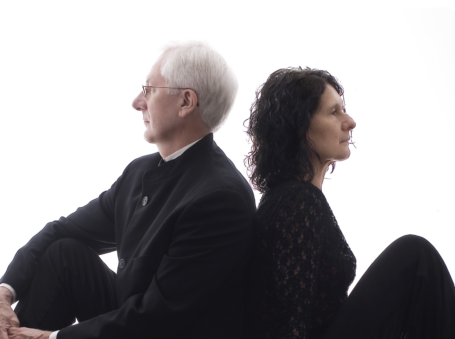 United Kingdom György Kurtág Játékok Lecture: Valeria Szervánszky, Ronald Cavaye (speakers/piano). Wigmore Hall, London, 10.4.2025. (CC)
United Kingdom György Kurtág Játékok Lecture: Valeria Szervánszky, Ronald Cavaye (speakers/piano). Wigmore Hall, London, 10.4.2025. (CC)

While this might seem rather niche – a lecture-recital on pieces by a Modernist composer – there was a fairly healthy audience in attendance. Enough, I hope, for Wigmore Hall to repeat this experiment on a regular basis. I for one came away both energised and enthused.
Both participants, Valeria Szervánszky and Ronald Cavaye, have known Kurtág who is still active at 99 with his landmark 100th birthday – all being well – next February. His series of pieces under the umbrella title Játékok (Games) is a web of pedagogical pieces, perhaps an equivalent to Bartók’s Mikrokosmos. Kurtág started writing in 1973, and the volumes just keep on a-coming.
Children at play is an important part of Játékok; for kids, the piano is a toy, so they play with it in different ways; random ways, at first. I remember a performance by György and Marta Kurtág in 2006 at Wigmore Hall, the pair playing on a specially-selected upright piano. It was a lovely occasion, excerpts from Játékok and some Bach transcriptions; one felt a real sense of privilege at being in the presence of greatness.
Szervánszky and Cavaye made the first complete recording of volumes 1-4 of Játékok in October 1992, spread over four CDs. Szervánszky studied at the Franz Liszt Academy in Budapest with both Pál Kadosa and Kurtág himself. She forms a duo with her husband Cavaye, who studied also at the Franz Liszt Academy, in his case under a British Council scholarship. To hear both comment and performances from these two musicians was both instructive and a privilege.
Breaking down Kurtág’s techniques (palm strokes, forearm clusters, glissandos) was married to projected scores which allowed us to see Kurtág’s varied and extended notation.
From the famous and almost impossibly beautiful ‘Flowers we are’ (from Book 8) to the Webernian ‘Hoquetus’ (Book 1) to the toccata-like ‘Thistle’ (Book 3) to the simple yet effective ‘Dirge 2’, to the ’Hommage a Christian Wolff’, to mention just a few, this acted as a reminder of the variety available within Kurtág’s unique world.
The breakdown of Kurtág’s performance and notional techniques was massively interesting, but so was the exposition of his thoughts on music, about how his music explores the connection between simply two notes, for example. The idea of Játékok as both workshop and diary is there, but so is Kurtág’s exploration of notation itself. We saw, for example, how there are three types of pauses, each with its own symbol, and how crosses can denote approximate pitch.
Most of all what one took from this recital was the sheer fertility of Kurtág’s imagination, including the compulsively misaligned ‘Furious Chorale’. Clov’s opening lines of Fin de partie (for my full review of the BBC Proms performance in 2023 click here) were also discussed, and the syntax (the importance of commas in the repetitions in the text and how those interruptions might map onto a purely musical surface, in this instance the silences in Kurtág’s ‘Hommage à Szervánszky: Silence’ from Volume 3).
It was, though, the melding of the information and the performances that was so magical. Perfect teaching material and yet so much more, Játékok continues to provide fascination for the curious.
Colin Clarke
